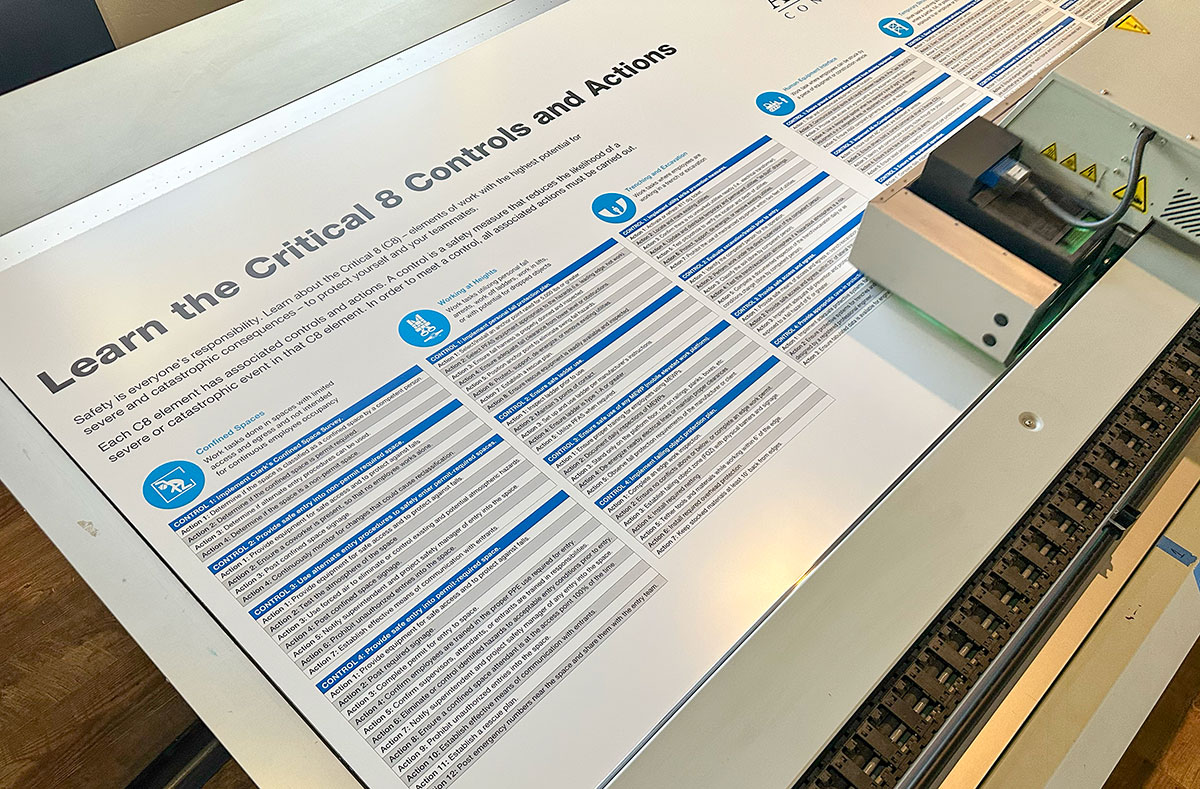Introduction
In a bustling construction environment, where multiple crews, vehicles, and hazards intersect, effective communication is critical. One of the most powerful tools for communication and safety is proper signage. When executed correctly, construction site signage can prevent accidents, ensure compliance, and streamline operations.
The Purpose of Proper Jobsite Signage
Construction signage does more than post warnings—it serves as the foundation for a safe, organized, and legally compliant worksite.
- Safety Alerts: Signs warn of hazards such as open trenches, overhead work, and heavy equipment operation.
- Legal Compliance: OSHA and Cal/OSHA require specific safety notices, hazard warnings, and information posters.
- Efficiency: Directional and instructional signage helps workers and visitors navigate large or complex sites.
Types of Construction Signage You Need
- Warning and Hazard Signs
Clearly mark dangerous areas.- Examples: “Danger – Keep Out,” “Caution – Overhead Work,” “Hard Hat Area.”
- Follows ANSI Z535 color codes for danger (red), warning (orange), and caution (yellow).
- Prohibition and Mandatory Signs
Communicate required actions or restrictions.- Examples: “Eye Protection Required,” “No Smoking.”
- Informational and Wayfinding Signs
Help improve navigation and emergency responses.- Examples: “First Aid,” “Visitor Entrance,” “Exit Route.”
- Temporary and Dynamic Signs
Used during specific phases like trenching, concrete pouring, or equipment lifts.
Best Practices for Sign Design and Placement
✔️ Visibility: Position signs at eye level near relevant hazards; use reflective materials for nighttime work.
✔️ Durability: Choose materials resistant to fading, moisture, and dust.
✔️ Consistency: Stick to one style and layout across the site for fast recognition.
✔️ Language: In El Cajon and much of California, bilingual signage (English & Spanish) improves safety for all crews.
California Compliance Notes (Cal/OSHA Focus)
In California, signage must meet or exceed Cal/OSHA requirements:
- A “Safety and Health Protection on the Job” poster must be visible to all employees.
- Confined spaces, fire hazards, and exits must be clearly labeled.
- Sites must maintain clear, legible signage even when layouts change during project phases.
Neglecting signage requirements can lead to fines, work stoppages, and even injury-related lawsuits. Proper signage is a low-cost way to avoid high-cost problems.
Smart Signage Solutions for Modern Jobsites
Modern printing and digital tools make professional signage easier than ever:
- Weatherproof reflective boards ensure visibility in all conditions.
- Site-specific QR codes on signs can link to safety sheets, MSDS information, or training modules.
- Custom branded signage reinforces your company’s professionalism and compliance commitment.
Conclusion
Properly executed signage is not just about compliance—it’s a culture of safety and communication. From large commercial projects to smaller residential builds across El Cajon, proactive use of high-quality signage helps protect workers, reduce risk, and keep projects on track.
If your next project needs compliant, professional-grade signage solutions, invest early—it’s one of the smartest safety decisions you can make.

